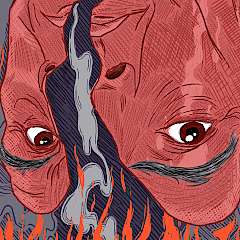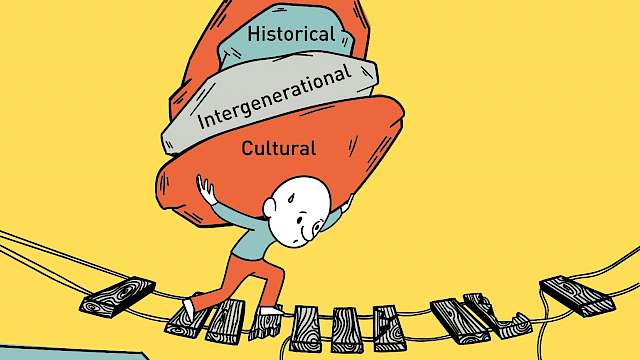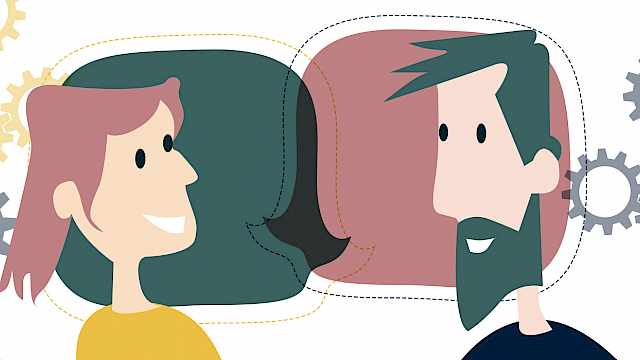Despite the international legal and normative consensus on the absolute prohibition of torture it remains one of the most common human rights violations around the world. According to the most comprehensive and up-to-date figures, torture has been reported in more than 140 countries (Amnesty International, n.d.). This article highlights issues that practitioners should be aware of when dealing with clients suffering from torture trauma.
The scope of torture
Torture refers to acts that intentionally cause harm and lead to severe mental or physical pain or suffering. The purpose of torture may be to obtain information or forced confessions, or to punish or intimidate individuals and sometimes even entire communities. In the common definition of torture, the perpetrators are state officials, such as the police or armed forces, or someone acting at the acquiescence of the state (e.g., Mirzaei et al. 2011; Gaeta, 2008).
Torture is a very serious form of violence and can involve many forms of physical, psychological, or sexual brutality.
Torture is a very serious form of violence and can involve many forms of physical, psychological, or sexual brutality. Pharmacological or chemical agents, such as sedatives or irritants may also be used. Rape is frequently reported, which often has long-lasting effects and can disrupt communities as a whole as reported by the International Rehabilitation Council for Torture Victims (IRCT) in their resource ‘Support Life After Sexual Torture’. Torture of all kinds often impacts the individual long after the events occurred.
The impact of torture
The objective of torture is to destroy all aspects of the person; to break them down, rupture their sense of identity, and sever their links to family and community. Torture can lead to permanent physical disabilities and psychologically scar victims, leaving them with profound and long-lasting mental health issues such as post-traumatic stress disorder, as well as anxiety and depressive disorders. Although many victims demonstrate extraordinary resilience, resourcefulness and agency, torture can profoundly impact all aspects of a person’s daily life. Severe headaches, insomnia, suicidal ideation, being easily frightened, being in heightened emotional states, feeling suspicious, having flashbacks, and involuntary disassociation are some of the most frequently reported symptoms of torture trauma. This can make it extremely difficult for people to maintain social relations, work, carry out basic day-to-day tasks and to participate in rehabilitative programs or administrative and judicial procedures.
Torture affects not only the individual and their bio-psycho-social being but can also have profound effects at the family, community, and societal levels, which practitioners and policymakers need to be aware of in their work with tortured individuals. At the individual level, these include psychological symptoms such as low mood and anxiety, sleep difficulties, learning difficulties, challenges paying attention and focusing, as well as difficulties with life and social skills. The effects of torture can also be seen in the client’s behaviour, for example, as fear responses or unpredictable behaviour. Functional capacity, family relationships and work capacity can also suffer significantly. Symptoms range from aggressive irrational outbursts through to bodily symptoms such as chronic pain or dissociative states leading to seizures or loss of consciousness.
What does this mean for practitioners?
It can be difficult for a person without professional training in trauma to recognise these issues and responses as trauma responses; yet they have potentially significant ramifications for practitioners working with traumatised people. Victims of torture who suffer from insomnia, chronic stress and pain, involuntary dissociation or anxiety and depression will struggle to participate in rehabilitative programs if no attempt is made to treat the trauma. They may miss appointments, appear disengaged, daydream, or demonstrate erratic behaviour. These are all normal adaptive responses and successful coping mechanisms which protected the individual during the period of torture, but now can make a person seem unwilling to cooperate with or participate in rehabilitative programs.
Victims of torture who suffer from insomnia, chronic stress and pain, involuntary dissociation or anxiety and depression will struggle to participate in rehabilitative programs if no attempt is made to treat the trauma.
Furthermore, many victims of torture come from contexts where there are very low levels of trust or confidence in public officials. This mistrust, combined with common trauma responses such as an elevated state of constantly assessing for threat (hyper-vigilance), and an increased need for control and reading more into other people’s social cues (hyper-mentalisation) can lead to a person forming biases and prejudices towards authority. They may develop beliefs or fantasies that there is a genuine threat towards them. This can also be seen in hypo-mentalisation, when an individual has difficulties understanding another person’s mind, as well as their own mind.
One of the features of torture is that those who carry it out are often representatives of the state or another form of authority. This means it can be unclear who is ultimately responsible for the torture. It is difficult to blame a state in its entirety when you need a more specific target to blame for your pain and trauma. As a result, the victim may develop a deep hatred of a particular authority such as the police or prison personnel, which can make it difficult for individuals from that authority to engage with the victim and offer them support. Hence, when dealing with a torture victim it is important to clarify who they feel was behind the torture, in order to avoid exacerbating feelings of victimisation to avoid the individual feeling that hate crimes against figures of authority are justifiable.
Working with victims of trauma
If required, it is possible to screen for experiences of violence and trauma by using tools such as The Protect Questionnaire. When dealing with potential victims of torture, there are a number of things that practitioners can do to engage ethically and effectively with clients. Most importantly, it is vital to create a safe atmosphere and to comply with principles of a trauma-informed approach. Specific things to be aware of, as laid down by the Istanbul Protocol (updated 2022) include:
- If possible, research the situation and the individual so you have as much information as possible.
- Avoid anything that could be perceived as threatening. For example, a practitioner’s clothing could be highly triggering because it brings to mind the uniforms of those who have abused them.
- Allow plenty of time for any interactions.
- Avoid making your client wait, be punctual, and keep your word.
- Proceed calmly in interactions.
- Use active listening skills when with the client.
- Anticipate and explain your actions.
- If medical examinations are required, prepare the client with particular care.
- If appropriate, emphasise confidentiality.
- Use professional interpreters to help in research and treatment settings where necessary.
- Ensure that treatment plans are individualised to take account of their specific experiences and needs.
- Continuity of care is helpful because treatment is often long-term and it takes time to build trust.
- Be mindful that problems such as addiction can arise through self-medication as an attempt by the individual to deal with their pain.
- Remain non-judgemental.
These issues can all present challenges for practitioners. They can be made more difficult because of hyper-mentalisation, which means the individual can take things personally, which may lead to misunderstandings and emotional outbursts. It’s also possible that practitioners will see avoidance behaviour, meaning that recruiting victims to rehabilitative group activities, even though these may be efficient, is usually challenging. As victims of torture may believe they are alone in their experiences, they might feel shame and not want to participate in group sessions.
In summary
Torture is a serious human rights violation. All victims have an unequivocal right to receive rehabilitation services for their trauma according to international law. Trauma-informed approaches can help practitioners foster environments and practices that promote a culture of safety, empowerment, and healing and therefore be an extremely effective policy tool.
It is important to highlight that practitioners and public authorities should treat all asylum seekers and refugees in a rights-based manner and with dignity, respect and care. They should not view them as potentially radicalised individuals. In the current highly polarised and toxic political climate surrounding migration in Europe, trauma-informed care and programs help us address complex social problems through a lens, which, through dignity and empathy, help people and communities integrate and overcome pain and suffering to rebuild new lives.
Lotta Carlsson is a Senior Advisor at the Helsinki Deaconess Foundation and an Independent Consultant for Abo Academy University, Radicalisation Awareness Network and the Council of Europe.
Read more
Amnesty International. (n.d.). Torture. https://tinyurl.com/3zu3pr42
Mizrai et al. (2011). How to combat torture if perpetrators are supported by a religious justification. Torture Journal, 21(3). https://tinyurl.com/yw2npnru
Gaeta, (2008). When is the Involvement of State Officials a Requirement for the Crime of Torture?. Journal of International Criminal Justice. 6(2). 183–193. https://tinyurl.com/2p9b4jbp
International Rehabilitation Council for Torture Victims (2022). Support Life After Sexual Torture. https://tinyurl.com/5y7esy45
Langdon, R. & Brock, J. (2008). Hypo- or hyper-mentalizing: It all depends upon what one means by ‘mentalizing’. Behavioural and Brain Sciences, 31, 274-275. https://tinyurl.com/37h5xtuy
Radicalisation Awareness Network (RAN) (2022). Personality disorders and mental illnesses with implications in preventing violent extremism. https://tinyurl.com/5n6mp294
Copyright Information
Tinnakorn| stock.adobe.com
Bits and Splits| stock.adobe.com







